toc
Icons in Body Text
Introduction to Inventory Management
Lesson:
Scope of Inventory Management and Physical Inventory
Inventory Management and Inventory as Part of Materials Manageme
Managing Material Stocks by Quantity
Managing Material Stocks by Value
Planning, Creating, and Verifying all Goods Movements
Executing the Physical Inventory
Lesson:
Goods Movements
Transaction MIGO
Hold and Manage Data
Exercise 1: Understanding Transaction MIGO
Task 1: Default Values
Goods Receipts
Lesson:
Other Goods Receipt
Initial Entry of Stock Balances
Goods Receipt Without Purchase Order or Production Order
Delivery Free of Charge
Exercise 2: Goods Receipt Without Reference
Task 1: Price Control Process
Lesson:
Goods Receipt with Reference
Goods Receipt to GR Blocked Stock
Automatic Generation of PO at Time of Goods Receipt
Prerequisites in Customizing
Prerequisites in the Application
Exercise 3: Goods Receipt with Reference to Purchase Order
Task 1: Goods Receipt into Stock in Quality Inspection
Exercise 4: Goods Receipt with Reference to Production Order
Exercise 5: (Optional) Automatic Generation of Purchase Order a
Lesson:
Return delivery
Subsequent delivery
Reason for movement
Returns for Purchase Order
Cancellation
Exercise 6: Return Delivery, Subsequent Delivery and Reversal Po
Task 1: Reversal and Subsequent Delivery
Exercise 7: (Optional): Returns
Lesson:
Open Purchase Order Quantity
Under and Overdeliveries in Goods Receipt to Purchase Order
Delivery Completed Indicator
Units of Entry for Goods Movements
Exercise 8: Delivery Completed Indicator and Tolerances
Exercise 9: (Optional) Purchase Order Price Unit
Lesson:
Shelf Life Expiration Date Check
Delivery: Too Early and Too Late
Exercise 10: Date Check for Goods Receipt
Stock Transfers/Transfer Postings
Lesson:
Transfer Postings and Physical Stock Transfers
Transfer Postings
Stock to Stock
Material to Material
Copying Rules for Transfer Postings in Transaction MIGO
Exercise 11: Transfer Postings
Task 1: Stock-to-Stock Transfer Posting
Lesson:
One-Step and Two Step Procedures
Storage Location to Storage Location: One-Step Procedure
Storage Location to Storage Location: Two-Step Procedure
Exercise 12: Stock Transfer Between Storage Locations
Task: Stock Transfer Between Storage Locations Using the Two-Ste
Lesson:
Cross-Plant Stock Transfer
Stock Transport Order Without Delivery
Displaying Stock in Transit
Damage to Goods During Transportation
Exercise 13: Stock Transfer Between Plants
Task 1: Stock Transfer Between Plants Using a Stock Transport Or
Reservations
Lesson:
Function and Origin of a Reservation
Structure of a Reservation
Create, Change, and Display a Reservation
Goods Movement with Reference to Reservation
Exercise 14: Manual Reservations
Task 1: Creating a Manual Reservation
Lesson:
Reservation List Inventory Management
Reservation Management
Set Movement Allowed Indicator
Deleting Reservations
Default Values for Reservations
Picking List for Reservations
Exercise 15: Manage Reservations
Task 1: Allowing Movement for Reservations
Lesson:
Availability Check
Availability Check of Stock Types (Static Availability Check)
Check of Available Stocks (Dynamic Availability Check)
Settings for Dynamic Availability Check in Inventory Management
Missing Part Check
Exercise 16: Dynamic Availability Check
Goods Issues
Lesson:
Goods Issue Without Reference
Sampling
Scrapping
Exercise 17: Unplanned Goods Issues
Task 1: Consumption Posting
Lesson:
Goods Issue with Reference to a Reservation
Goods Issue with Reference to Order
Exercise 18: Goods Issue with Reference
Task: Goods Issue with Reference to Production Order
Lesson:
Stock Determination
Inventory Management (MM – IM)
Creation of Stock Determination Strategies
Exercise 19: Stock Determination
Lesson:
Negative Stock
Negative Stock Settings
Postings for Goods Movements with Negative Stock
Analyses for Negative Stocks
Exercise 20: Negative Stocks
Task: Negative Stocks
Special Stocks
Lesson:
Special Procurement Subcontracting
Subcontracting in Purchasing
Subcontracting in Inventory Management
Stock of Material Provided to Vendor
Provision of Components
Goods Receipt for Finished Product
Subsequent adjustment
Transfer Postings of Stock of Material Provided
Exercise 21: Subcontracting
Task 1: Providing Components Without a Purchase Order
Lesson:
Special Procurement Vendor Consignment
Vendor Consignment in Purchasing
Consignment Info Record
Consignment Order
Vendor Consignment in Inventory Management
Vendor Consignment Stock
Goods Receipt to Vendor Consignment Stock
Transfer Postings
Goods Issue from Consignment Stock
Vendor Consignment in Invoice Verification
Exercise 22: Vendor Consignment
Task 1: Consignment Stock
Lesson:
Special Procurement Pipeline
Pipeline Material
Pipeline in Purchasing
Pipeline in Inventory Management
Settlement of Pipeline Withdrawals
Exercise 23: (Optional) Pipeline Material
Lesson:
Own Special Stocks
Consignment Stock with Customer (Special Stock Indicator W)
Returnable Packaging with Customers (Special Stock Indicator V)
Externally Owned Special Stocks
Returnable Transport Packaging (Special Stock Indicator M)
Sales Order and Project Stock
Analyses and Evaluations of Special Stocks
Special Features of Material Valuation
Lesson:
Material Type UNBW
Material Type NLAG
Exercise 24: Material Type UNBW
Lesson:
Settings for Split Valuation in Customizing
Settings for Split Valuation in the Material Master Record
Effects of Split Valuation in the Application
Exercise 25: Split Valuation
Physical Inventory
Lesson:
Physical Inventory
Physical Inventory Process in Three Phases
Physical Inventory Document
Entering Physical Inventory Count
Posting the Difference
Determination of Book Inventory
Blocking Goods Movements
Freezing Book Inventory
Adjusting the Book Inventory in the PI Document
Postings Resulting from Physical Inventory
Own Stock
Vendor Consignment
Exercise 26: Carrying Out the Physical Inventory
Task 1: Physical Inventory Block
Lesson:
Combining Physical Inventory Steps
Administration of Sessions
Batch Input
Batch Input Sessions in Physical Inventory
Create physical inventory documents without special procedure
Exercise 27: Simplifying Physical Inventory
Lesson:
Cycle Counting Method
Definition of the Cycle Counting Indicator
Determining the Cycle Counting Indicator
Creation of Physical Inventory Documents
Exercise 28: (Optional) Cycle Counting
Lesson:
Calculation Basis
Inventory sampling
Form the Stock Population from Stock Management Levels
Forming Strata and Drawing Samples
Update
Extrapolation
Analyses
Lesson:
Analyses in Inventory Management
Reports that Generate Document Lists
Reports that Generate Stock Lists
Customizing
Define Stock List Display
Define Field Selection for Material Document List
Set Up Print Functions for Reporting
Group Movement Types for Stock Lists
Exercise 29: Lists
Task 1: Document Lists
Lesson:
Analyzing Conversion Differences
List of Stock Values: Balance Display
Stock Consistency Check
Customizing
Lesson:
Number Assignment
Number Assignment for Accounting Documents
Number Assignment for Material and Inventory Documents
Number Assignment for Reservations
Lesson:
Control Functions of the Movement Type
Create New Movement Type
Exercise 30: Movement Types
Lesson:
Plant Parameters
Settings for Enjoy Transactions
Field Selection for MIGO
Field Selection per Movement Type
Settings for Transactions and Reference Documents
Exercise 31: Customizing Settings for the Enjoy Transactions in
Logistics Execution
Lesson:
Scope of Logistics Execution
Introduction to Logistics Execution
Scope of Function
Basic Forms of Process Display
Organizational Units
Substructure of Warehouse Number
Exercise 32: Logistics Execution
Task 1: Overview of the LE menu
Lesson:
Goods Receipt Posting and Transfer Requirement
Transfer Order and Putaway
Exercise 33: Posting Goods Receipt Against a PO to a Storage Loc
Task 1: Goods Receipt in Inventory Management
Lesson:
Goods Issue with Outbound Delivery
Exercise 34: Delivery of Goods for a Sales Order
Task 1: Sales Order and Outbound Delivery
Lesson:
Definition
Implications for Inventory Management
Use in the Logistics Process
Exercise 35: Handling Unit Management
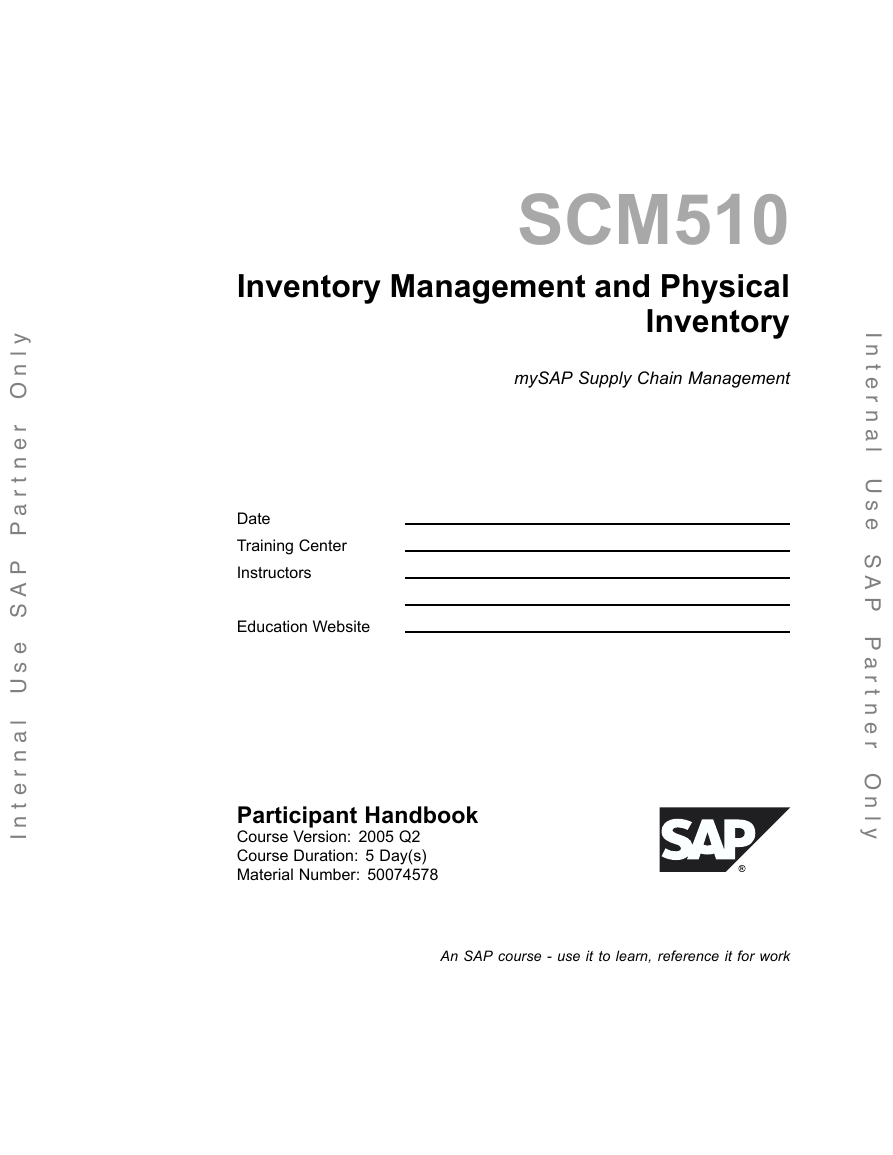

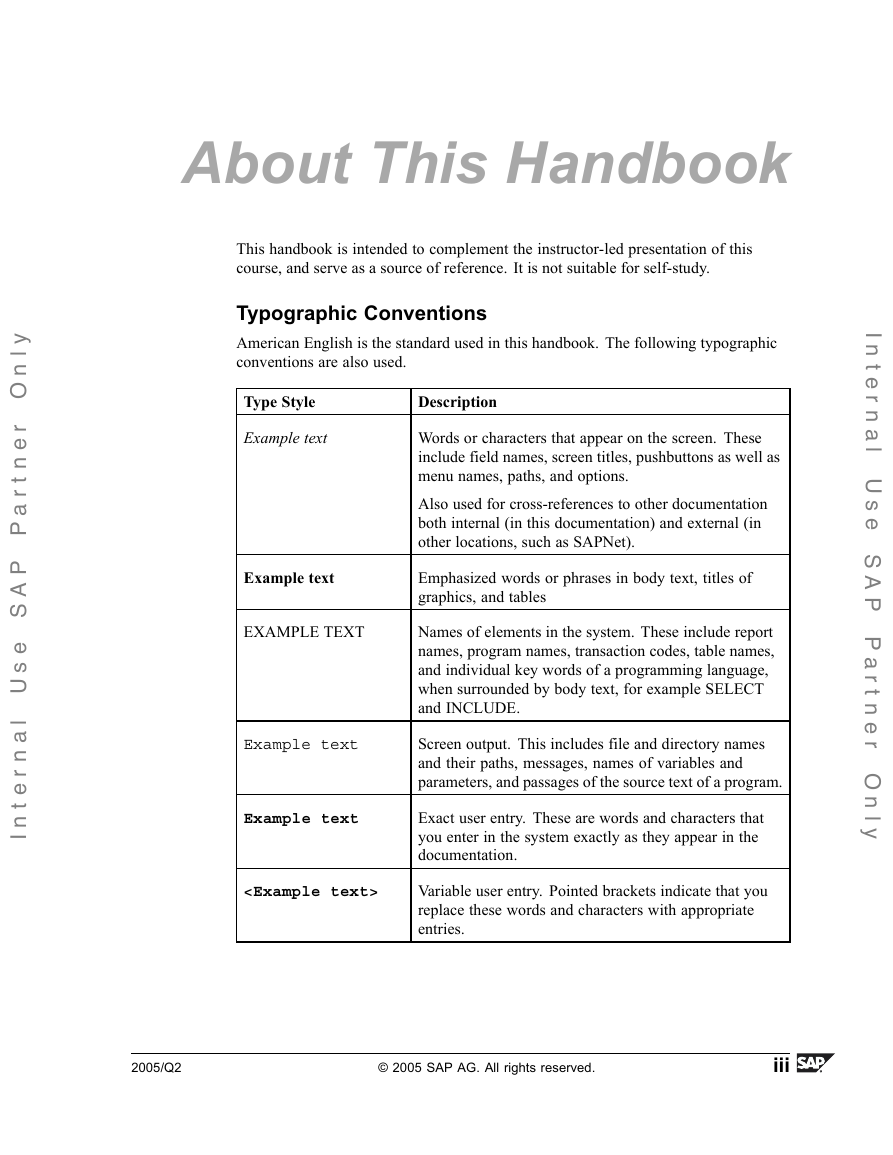
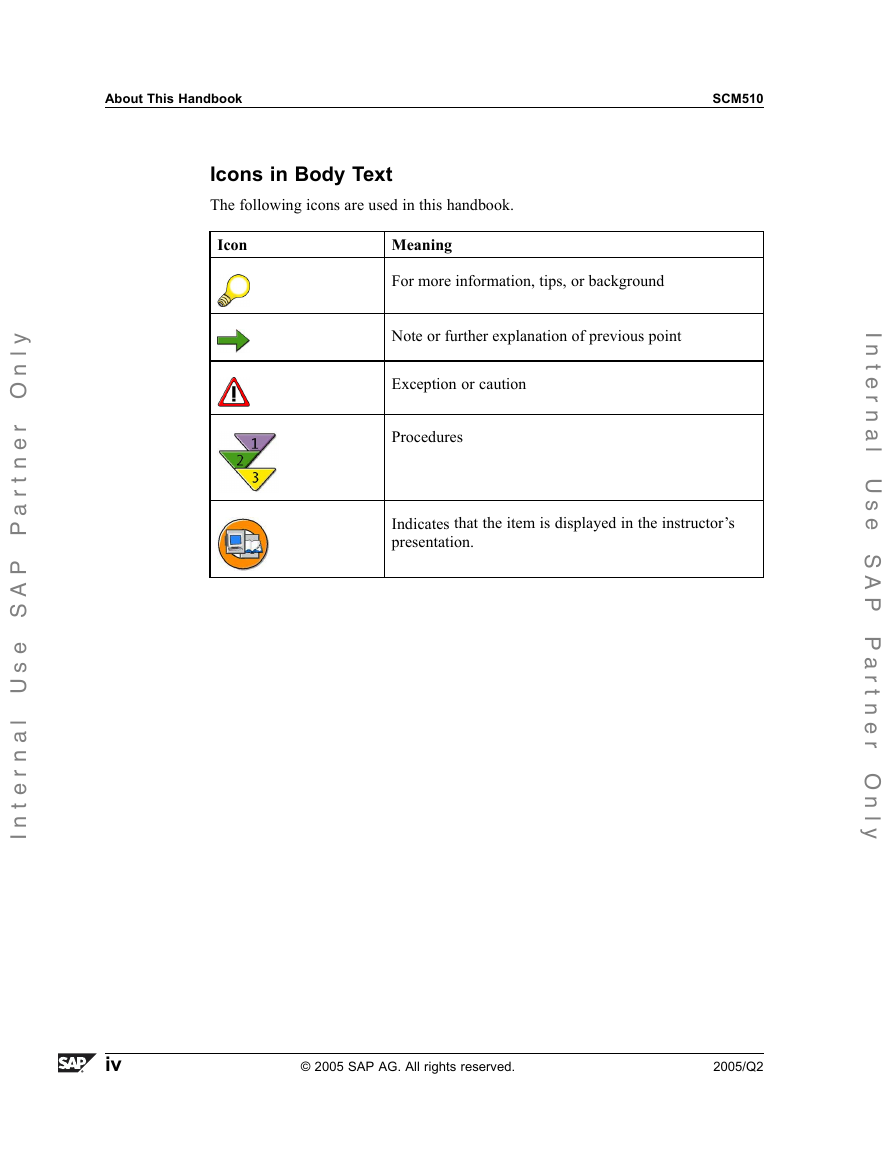
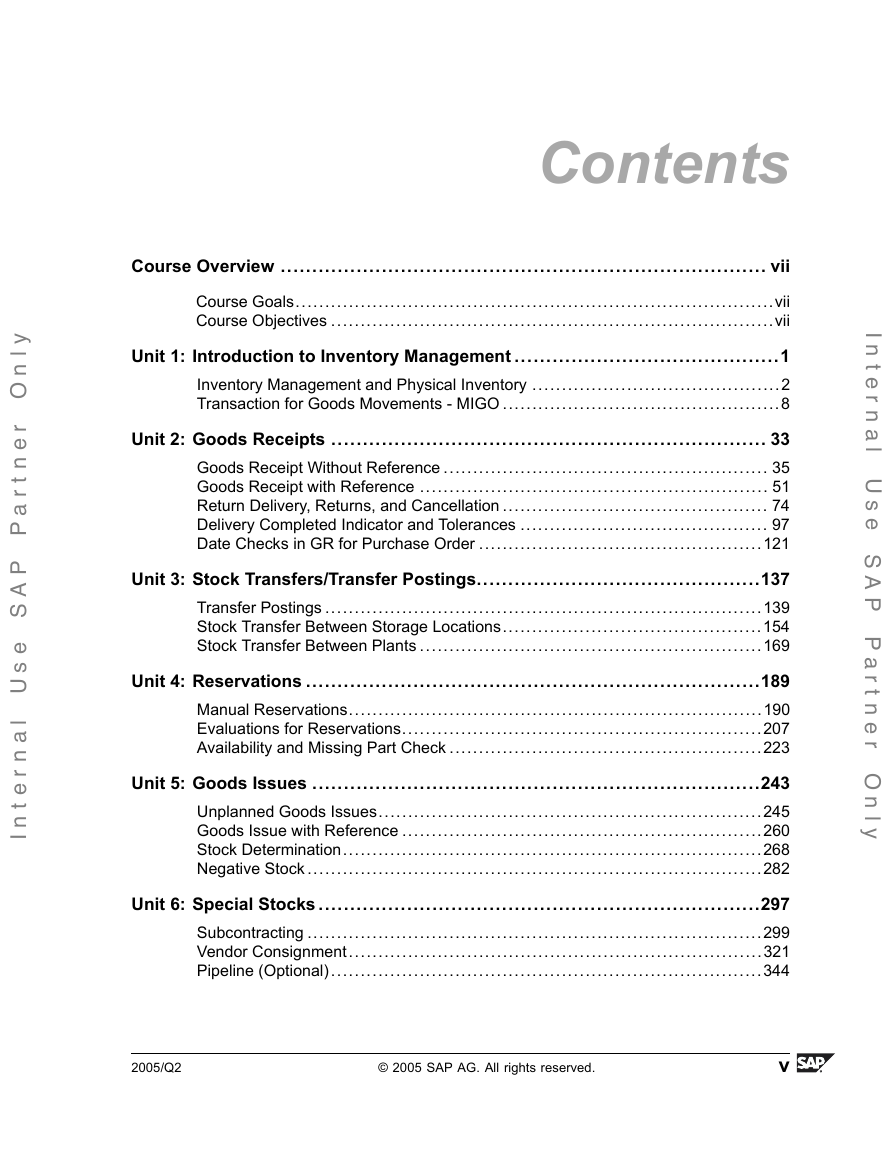
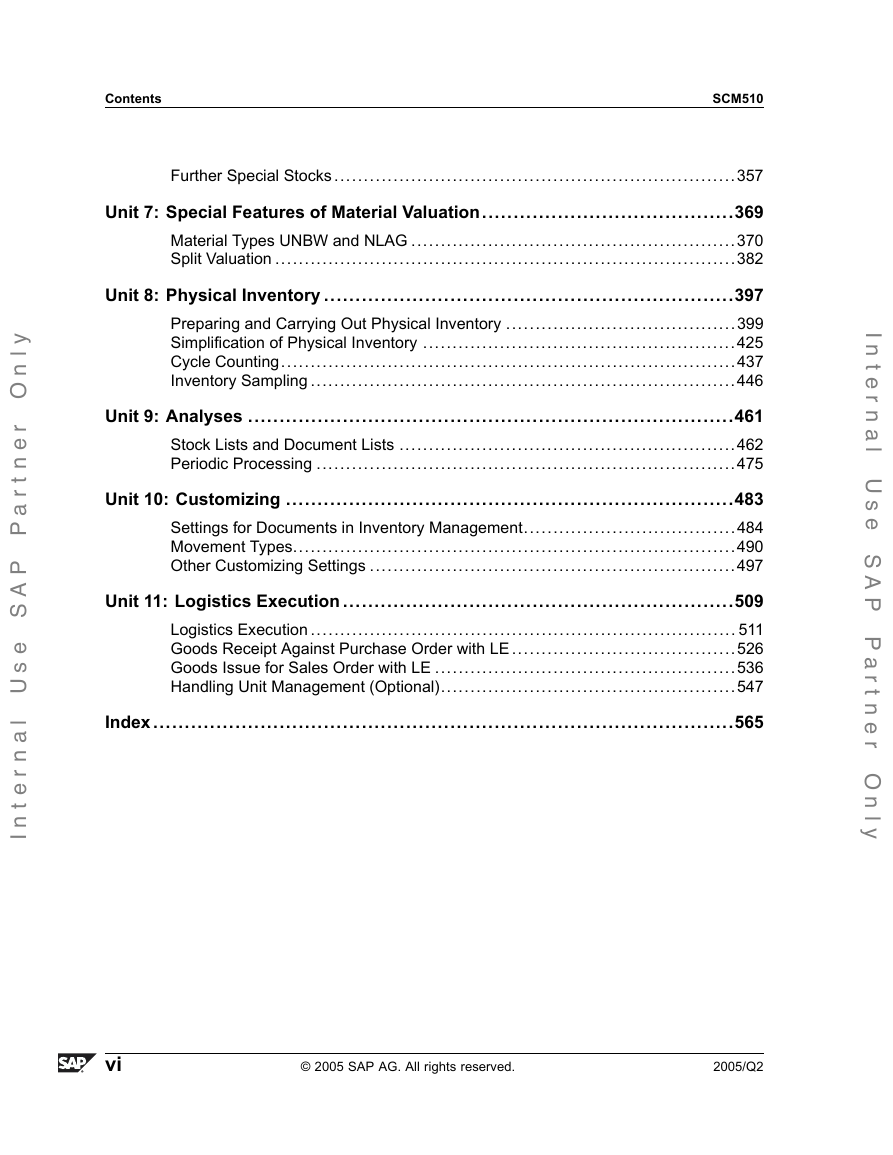
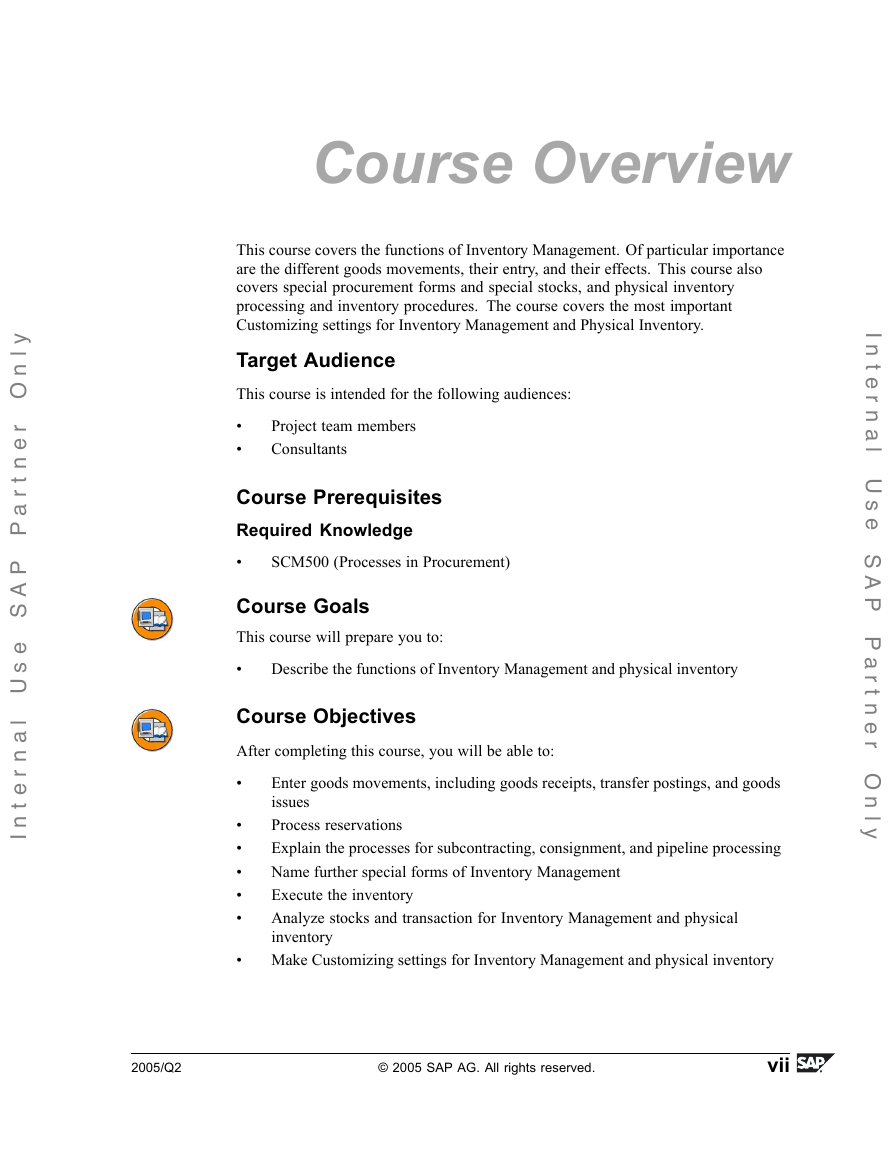
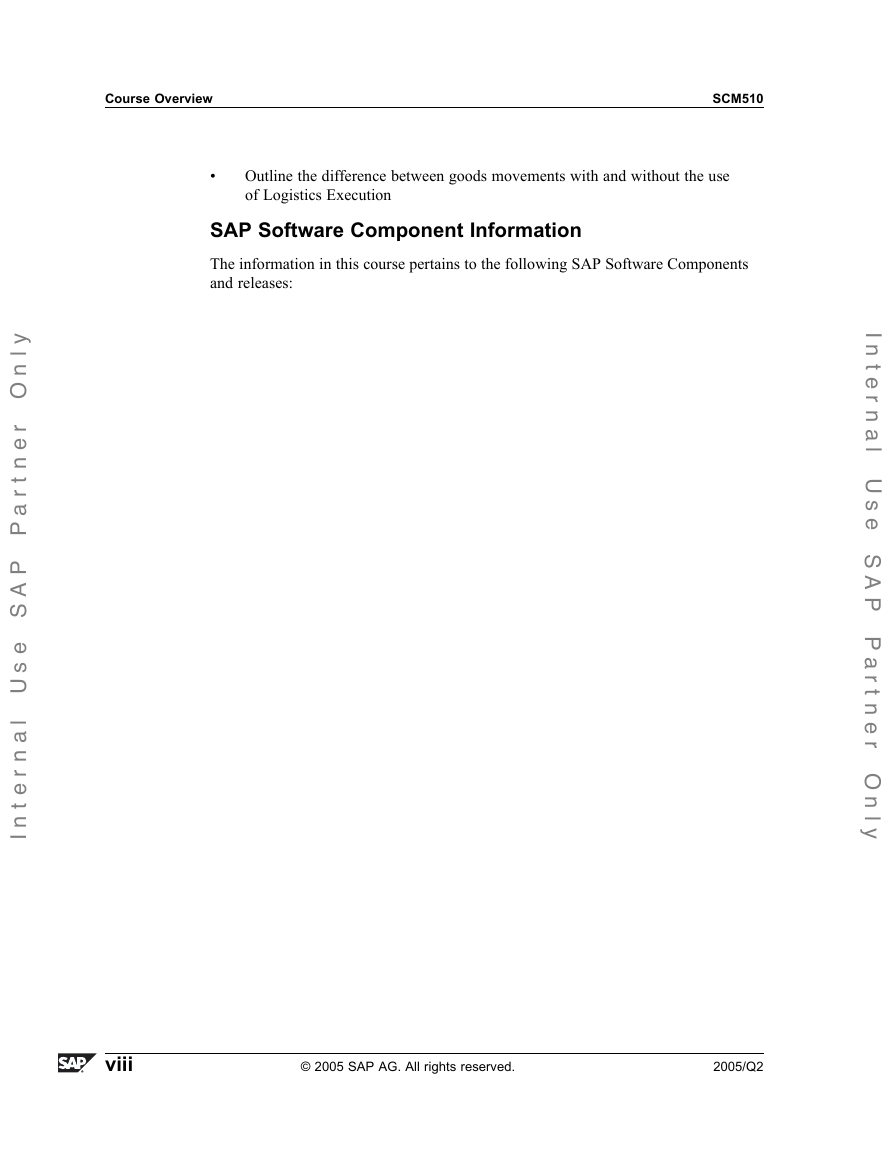








 2023年江西萍乡中考道德与法治真题及答案.doc
2023年江西萍乡中考道德与法治真题及答案.doc 2012年重庆南川中考生物真题及答案.doc
2012年重庆南川中考生物真题及答案.doc 2013年江西师范大学地理学综合及文艺理论基础考研真题.doc
2013年江西师范大学地理学综合及文艺理论基础考研真题.doc 2020年四川甘孜小升初语文真题及答案I卷.doc
2020年四川甘孜小升初语文真题及答案I卷.doc 2020年注册岩土工程师专业基础考试真题及答案.doc
2020年注册岩土工程师专业基础考试真题及答案.doc 2023-2024学年福建省厦门市九年级上学期数学月考试题及答案.doc
2023-2024学年福建省厦门市九年级上学期数学月考试题及答案.doc 2021-2022学年辽宁省沈阳市大东区九年级上学期语文期末试题及答案.doc
2021-2022学年辽宁省沈阳市大东区九年级上学期语文期末试题及答案.doc 2022-2023学年北京东城区初三第一学期物理期末试卷及答案.doc
2022-2023学年北京东城区初三第一学期物理期末试卷及答案.doc 2018上半年江西教师资格初中地理学科知识与教学能力真题及答案.doc
2018上半年江西教师资格初中地理学科知识与教学能力真题及答案.doc 2012年河北国家公务员申论考试真题及答案-省级.doc
2012年河北国家公务员申论考试真题及答案-省级.doc 2020-2021学年江苏省扬州市江都区邵樊片九年级上学期数学第一次质量检测试题及答案.doc
2020-2021学年江苏省扬州市江都区邵樊片九年级上学期数学第一次质量检测试题及答案.doc 2022下半年黑龙江教师资格证中学综合素质真题及答案.doc
2022下半年黑龙江教师资格证中学综合素质真题及答案.doc